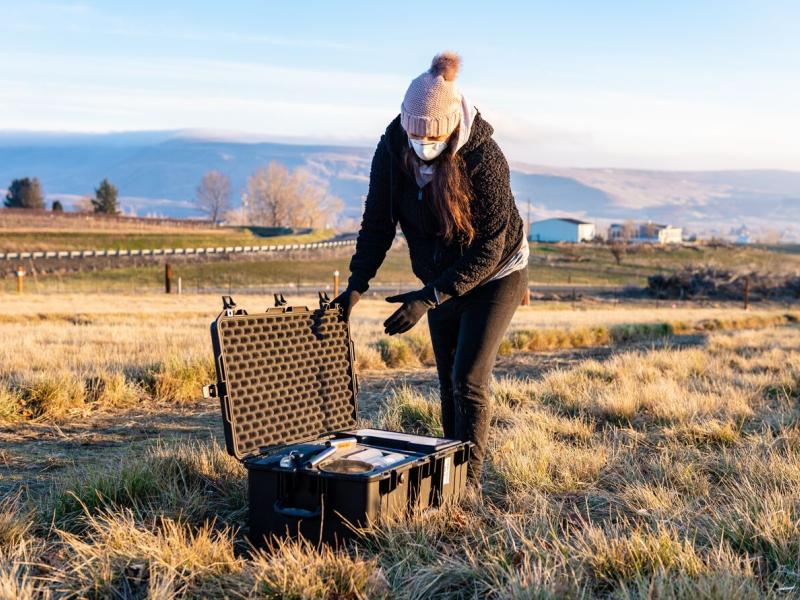
Integrative
Omics
Integrative
Omics
Dissecting molecular
complexities
Dissecting molecular
complexities
Researchers are focusing on increasing the sensitivity of proteomics measurements. Their goal is to make the sample size as small as possible so that they can create maps or images of where proteins are located in tissue samples.
Their latest demonstration achieved a lateral resolution of 100 um, or the width of the average human hair. Researchers eventually hope to map proteins in a tissue on a cell-by-cell basis. This technology is applicable across all fields of biology and so far researchers have applied it to studies of lung development, diabetes, Alzheimer’s disease, and tumor heterogeneity.
Andrea Starr | Pacific Northwest National Laboratory
Life is dynamic, complex, and interconnected. At the foundation of those features are biomolecules—proteins, lipids, and metabolites that control the key steps in growing and maintaining life.
Omics, which describes fields of study that focus on a specific type of biological molecule, underpin much of the Pacific Northwest National Laboratory’s (PNNL’s) biomedical and environmental research and supports national goals related to energy resilience, public health, and security. Our integrative omics researchers bring together analytical and computational tools to explore the molecular complexity of plants and people using mass spectrometry, bioinformatics, and computational biology.
Projects span a wide range—from exploring microbiomes in soil and plant systems to investigating the biomolecular underpinnings of cancer, diabetes, and infectious disease. All of this work benefits from collaborations with the Environmental Molecular Sciences Laboratory, a U.S. Department of Energy user facility located on the PNNL campus.
In environmental research, omics is used to study bioenergy, carbon cycling, environmental remediation, and the structure and function of microbial communities. PNNL researchers also investigate molecular details of pathways involved with aspects of bioproduct production, including microbial photosynthesis and degradation of lignocellulose.
In health and disease, researchers use omics to study cancer, diabetes, and infectious diseases in samples ranging from tissue and blood to single cells. We are studying molecular mechanisms of aging, lung development, and viral pathogenesis. Our researchers trace molecular signatures of exercise, study how the gut microbiome influences human health, and examine how chemical exposures from diet, environment, or warfighting scenarios affect biological function.
Dissecting molecular complexities requires developing new technologies for analysis and measurement. To advance these investigations, PNNL develops new tools for measurement and analysis. This includes new protein-directed activity-based probes to uncover the precise function of proteins measured on a large scale, new metabolomics libraries that classify the wide variety of small molecules in living systems, and bioinformatics technologies that integrate data from various sources.
Finally, PNNL's Translational Omics group develops advanced chromatographic and other separation methods coupled with high-resolution mass spectrometry. With their advances, they continue to push the boundaries of high-resolution measurement, enabling the identification of individual proteins or molecules in extremely complex mixtures—accelerating discovery in health, energy, and environmental science.




